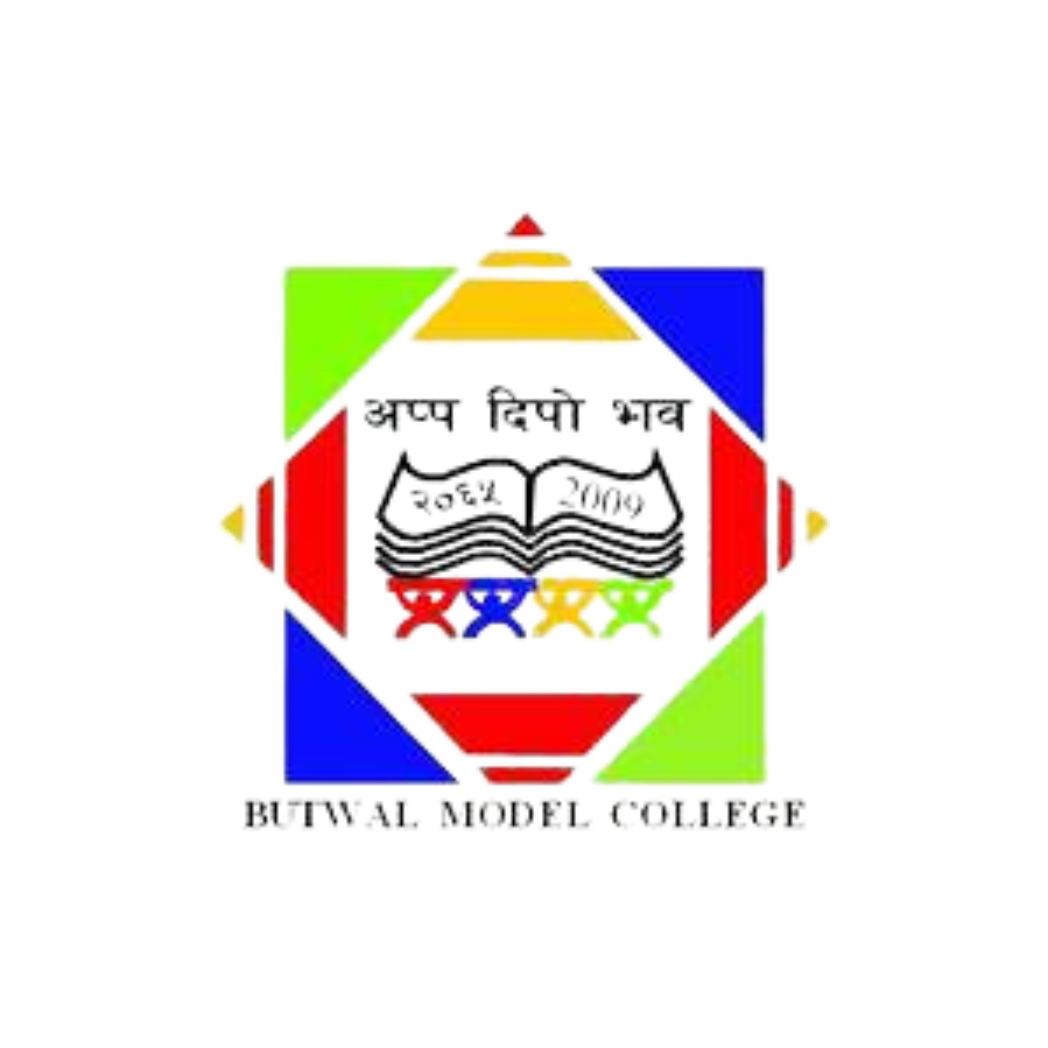-Rishiram Adhikari, Department of English, Balmiki Vidhyapitha (Campus), Nepal Sanskrit University, Kathmandu, Nepal-
Abstract
The study analyzes the performance culture of the Magar living in Chitwan. Their culture is growing as hybrid form with mixing of the entities of global and local culture. Main concern of this study is related to the issue why and how performance culture of Chitwan’s Magar in-between of local and global culture. Qualitative research design was used to analyze the issue raises in the paper. Both primary and secondary sources of data were used and conclusion has based on the interpretation and analysis of the collected data. It is found that due to influence technology, migration , influences of mass commutation and social media, demand of tourism play role to adopt global culture and issue of self-recognition, self-dignity and indigenous feeling of pride force to continue and preserve their native cultural value and practice.
Keywords: performance, Magar culture, tourism, folk song, globalization, localization, capitalism
Introduction:
Magar is one of the Sino-Tibetan ethnic groups living in Palpa and its neighboring districts of western Nepal. Geographically the area is located on the section of Dhablagiri Himal and High hill of Mahabharat range. Most of the Magar villages are scattered between 1200-2500 meters in the high hill area, however, some have migrated to the plain area. According to the CBS report (2011) the total number of the Magar population of Nepal is 16, 22,421. It covers 7.14% of the total population of Nepal. In this regard Dor Bahadur Bista states, “…[O]ne of the ethnic groups living in western hilly region of Nepal. They have flat and short nose round face ad dark eyes” (45). There are many myth about the origin of the Magar which are based on legend and conjectures. In this regard, John, T Hitchcock says, “Magars are the descended of the ‘Mayar’ who is the elder of “Hun”, the person who are the chief of the nomad of central Asia” (24). Thousand years ago Magars had established their kingdom near by the Kali Gandaki River and rule the certain territory which is still known as the ‘Magarat’ region. David N Gellner, notes, “ Magar had a beautiful kingdom that collapsed by the evader in Gandki region” (p. 256). Gandi province where twenty four tiny kingdoms were located in the past is known as the traditional homeland of Magar. It is believed that they lived with their rich performance culture like song and dance. They have their own language and performance culture, which is unique in itself. Many dances and songs are still existed in the Magar which performed on the auspicious occasions of the festivals. Sorathi and Maruni are the two important Magar dance and song which are not only popular among them but also famous in Nepali folk dance and song of Nepal.
Chitwan offers a very rich Magar performance culture to the outsiders. The Magar are living in their communities with their cultural sense of the past, changes have taken place in their cultural modes expression. Due to the impact of modernization and the advent of modern science, their culture is getting modified day by day. On the one hand they are continually following the past. On the other, there is the crisis-cross of the different cultural threads because of the in-migration of people from hills and the flow of tourists to observe the nature and culture of this place. There is no uniformity in their present sense of culture and that of the past. Due to the commercial motive and the influence of global capitalism, they know the pragmatics of preserving their culture as cultural commodity to stage it to the tourists and earn from it. The songs and the dances that they cherish are for their cultural integrity as well as for the commoditization of it to get economic benefit. Magar performance culture retains the sense of dances, songs, languages, religious ceremonies and ritual practices. In the field of dances Maruni (Dance by male wearing female dress) appears as the manifestation of their commoditized cultural product to stage it in the open tourist market so as to earn money from it. Similarly, the performance of Sorathi (dancing in group by sixteen females) ensues the sense of marketable cultural product for commercial gain. Likewise there are other performance activities that mark the changing trend in their today’s performances in comparison to the past ritual practices. They celebrate to invoke their deities and get their blessings as well as please the foreign tourists.
Method and Theoretical Perspective:
The study followed the guideline of some theorists and writers who have focused on aspects of performance theory. Richard Bauman is one of them who focuses on communicative behavior of the cultural performance highlights that performance as “a mode of communicative behavior and a type of communicative event (“Performance” 41). In the same line Elizabeth Bell highlights the social aspect of performance
as, “Performers materialize the characters in and through their bodies” (179). The means of performance reveals the memory and history of the particular social group, family, community and region. Dwight Conquergood underlines that performance studies includes the local, regional, vernacular and naïve knowledge’s as subordinate people do not have the privilege of explicitness, the luxury of transparency, direct communication, free and open debate. In other words, their subjugated knowledge is “masked, camouflaged, indirect, embedded or hidden in context” (370). Indeed, its performing event is “re-enactment of mythic events, few who participate” in the singing and dancing, which has a fragmentary knowledge of those myths” on the classical tale of Rama (Ellen, 75). In the same line Richard Schechner asserts that performance is a broad spectrum of activities including at the very least the performing arts, rituals, healings, sports, popular entertainments and performance in everyday
life” (“Performance Studies” 7). Like Schechner, Turner focuses on liminality feature of the performance that is found similarly in the Magar performance culture living in study area. In this regards, he notes, “Performers of the rituality are departed from the ordinary demand and expectation of their folk life. They themselves offer of lowliness and sacredness, of homogeneity and comradeship” (Turner, “Liminality”: 90). Indeed, their personal and social differences are put aside. r Stuart Hall, culture is concerned with the shared values of a group or of society” (2). Cultural performance reveals the shared social meanings as two people belong to the same culture that they interpret the world in roughly same ways and express themselves their thoughts and feelings. Similarly, Richard Schechner’s concept of cultural performances as the “Mark of identities that performed as recognition self-dignity. Stuart Hall discussed the issue as representation and note, “Ritual performance and communitas from the areas of performance”(56). Hall highlights that performance is nothing than the representation of culture. Except the theoretical guideline the study followed the qualitative research designed and both primary and secondary sources of the data were used. Library research method was used to collect secondary source. Books, articles and already published reports were used as secondary source. Primary data were collected through non participatory observation method. I have observed the some cultural performance that performed in study area. Kalika municipality wards no. 8 Devitar has been selected as the study area of this study.
Study Area
Kalika municipality ward no 8 Devitar area has been selected as study area for this study. The area is located in province no 3 150 km far from Kathmandu. Total population of the municipality is 55734 and 4216 in ward no 8. (Municipality Report, 2021). Among them 1234 Magar live in Devitar. They have been living in the area hundreds of years. The area is known as the core Magar area of the Chitwan district.
Map of Study Area
Nexus between Global and Local in Magars’ Performance Culture
Because of this global impact on cultures, every local culture is bound to create a new facet which is neither akin to its previous form nor to the dominant impact of the foreign culture. Then the cultural boundary of nation-state gets shattered in the currents of outside culture. In congruent with the views of Arjun Appadurai, notes:
. . . [G]lobalization – simply the intensification of global interconnectedness- is transforming the existing world order most conspicuously through its direct challenge to the primacy of the nation-state in its present form . . . the question of whether humanity is witnessing the unfolding of a new historical epoch
or alternatively whether the present “phase” of globalization simply conceals a renewed strengthening of the existing structures of western modernity-capitalism, industrialism, and the nation-state system. (2)
The new culture that comes at the crisscross of local issues and global trend gets assimilated and brings a new one at the changing form. Now is the time of loose boundary in regard to different phases of modern conditions of life. Chitwan, thus, has become world-renowned as a site of natural tourism, and a destination for adventurous activity. Adventure tourism also transforms nature-places more generally, turning them into something more dangerous and exciting than they used to be. Not only have some of the most scenic and spectacular places in Nepal been protected by the state from sprawling tourist-related development, these same places have been made available for specific adventurous activities. In this way, adventurers benefit from unspoiled
natural settings in which to combat the forces of nature, but at the same time nature is practiced and performed as adventurous, exciting and a place to be experienced via active tourism.
Including the cultural tourism, Chitwan is famous for ecotourism and adventure tourism. Fundamental to this process is the presence of guides, who are the gatekeepers for the negotiation of these experiences. However, it is at the level of the body that adventurous performance is truly felt. Performing various roles in public space is the dominant way that individuals make sense of their worlds and, especially, of their own bodies. Performance is thus many things at once an interpretation, a public act, a way of knowing and an embodied form of understanding. These embodied performances shape, and are shaped by, the spaces they inhabit, thus reifying the reputations previously inscribed. Rose says, “That the body is entangled with fantasy and discourse. Fantasy mobilizes bodies are expressed through discourse and discourse is disrupted by fantasy and interrupted by the body” (258). Certainly, the participants seem to be fully aware of what is expected of them in their enacted role. Respondents are undeniably aware of the desire to bring this expression of having the ‘right stuff’ into their performances, expressing a need to look good for both the audience and the souvenir video. The ‘dressing up’, involved in many adventure tourism activities,
is a central part of their performative nature, as there is often a need to feel that the participant is wearing suitable attire for the experience.
Among the cultural performances of the Magars the two cultural dances Maruni and Sorathi come with prime importance here. These performances are the activities that people find themselves in while accomplishing their day to day life. It also explores several artistic disciplines and are works that may cross traditional media boundaries such as works that include aspects of theater, music and visual arts including video. Many performances cross the perceived boundary between art and life such as thinking of everyday activities in an artistic manner.
Maruni
The festival, Maruni, for the Magar people of Chitwan has now become a performance of rituals to the tourists so as to reaffirm their unique cultural identity. The performance of body at the dance evokes a religious milieu uniting Magars to enhance tourism in Chitwan. The songs that women sing in their group known as Maruni for this dance carry a unique view of women’s cultural position in the family and society. Roila songs with their critique of domestic relations, ritual practices, and intuitive expression of female pangs – constitute a medium for the performance of body and identity for Magar women. Magar performances, now, also evoke the issues of identity, culture, rituals and histories to tell the tourists that they should be looked, observed, and studied to do something for them. Body has a sort of cultural semblance in almost all of their performance activities.
Maruni is a festival, and importantly a ritual event for Magar, celebrated on the second day after the new moon in the Nepali month of Kartik , especially on the first , second and third day after the full moon of Kartik (known as Karike Unshi) in Nepali calendar – that is, during the mid- October to mid-November according to the English calendar). Maruni is, thus, presented as a ritual that reinforces the notion of cultural and gender relation of Magar religious ideology and helps to produce a society, which willingly and compliantly formulate performance retaining the cultural logos and foregrounding the seer significance of bodies. On the one hand, the women perform rituals that endorse the ideology of traditional notion of body-privilege, while on the other they voice, through the songs, dances and bodily movements that they create a new society which tries to maintain the harmony critiquing the commentary against social relations and the wider political situation that has marginalized them.
The song that sung in Maruni also provides a commentary, an alternative perspective, on women’s position in society. The verses disclose the problems wives and daughters face, the anguish they feel, the criticisms they have of their malefactors, and the implicit or explicit protests they have against the social system that places them in their powerless and vulnerable position.
Sorathi
Another cultural commodity that has become the object of study is the Sorathi Nach. Each local and particular ‘Magar ‘ culture has been developed in a wider context with a different geopolitical niche revoking the past in performing role. Among all these cultural performances two cultural dances of Chitwane Magar, as a common cultural display of them, marks the domain of cultural display of body politics to the tourists in Chitwan. The Sorathi (a dance gathering sixteen people Dance) weaves the tales and memories of the ancestry with the flavor of modern global flows and socio-economic influence. The dance, usually performed by young men, takes place in a circle with rhythmic tune of musical instruments like Maadal and Jhurma. The group of dancer whirls and clash in a fantastic display of precision handling and timing. The dance projects its origin of a war culture that they underwent while coming to encompass their folks and safeguard them from the foreign attacks and preservation of the chase after a long effort for meal to their members. Not only this, the dance also manifests the part of an effort that they make to fend off and frighten wild animals away from crops when they had turned to the agrarian society in the beginning. Males with traditional costumes appear in the circle and start singing and dancing showing adroitness in the performances of wary nature with agile body and swift motion.
Cultural Performance in Kalika, Chitwan
The rites and rituals, the Magar undergo, as well as the performantive role of the mixed-up society preserves many sectors for tourism development. These developments by which coincidental tourist experience of the Magar performance culture becomes a highly organized and government-sanctioned enterprise is known as ‘cultural tourism’, and it gets well documented resulting from market forces and the presence of tourists on the area.
Chitwan has become now a centre for tourists as well as migrant people from other culture, it has appeared as a place to make intermingling of the people of different levels and places so as to render a new cultural mold. There is also the global, outward flow of younger populations form other localities, who seek jobs here, often leaving older, unsupported family members behind. The relocation of financial and service sector employers and corporate service employers in the countryside leaves them still firmly integrated into urban-centered networks and specialist labor markets.
Consequently, in some areas an urban imported service class culture infiltrates the rural social landscape. Contrasts can be drawn between those residents, who are excluded and deprived, lacking the power to alter their lives in rural areas, and those who are privileged and enjoy a comfortable lifestyle the idea is very much related to the idea of Turner. Magar performance culture not only limits in cultural value but also interlinks with tourist zone. I see following in my observation as;
In performance they adopted new techniques like others modern performance and mixed certain entities related to their history and legend. Their legendary matter only play role to preserve their recognition other parts of the performance is guided on entrainment (Non-Participatory Observation).
All these factors, taken together, can help formulate an eclectic, holistic approach that incorporates the key concepts of space, power and values in countryside peripheries beyond urban centers.
Magar Performance is reshaping with mixing of global and local culture both arrived zone of crisis-cross reshaping the pre-existing systems of thought. The Magar culture of Chitwan gets touched with the impact of tourism, which comes as an integral part of globalism. As a result, the tourism in Chitwan has brought a third culture in which there is no traditional notion of culture. Thus, in the mythic landscape of the ritual performance too, it is found the traces of modern influx in performance. The past legends and memories are there, but newness is equally in practice in the performances of Magar community. In place of the house yard of mukhiya (the symbolic king of the village), now the dances are in the court yard of the star hotel (the symbolic modern capitalist king). In the performing the cultural dance inside the hotel entertainment replace the spirituality and myth and it appears as means of entertainment rather than the issue of gods and goddess.
Now songs and dances are changes as form of parody and it uses for entraining other not preserving myth, culture and ritual. It appears as form of hybrid, neither new nor traditional. The global impact of capitalism has made them remain agape at this alluring, but hybrid culture. Among various performances of Magar, Maruni and Sorathi have long historical and cultural significance which play important role to live Magar culture in the present form and identified the ethnic identity of the community.
Conclusion:
Maruni, Sorathi and many others are the cultural festivals but in the context of regular performance, they have become a performance in which spectacles matters on the basis of the songs examined in this research, we can assume that all these performance cultures and songs are probably the continuation of their material culture. But now they are found getting improvised in accordance with everyday reality and the matter of global flows. The songs are not homogeneous in content, nor do they emerge from a single antecedent form of the genre. Despite the anticipated growth of the tourism industry globally, it is important to note that tourism as a development option should not be taken in isolation from other sectors, but incorporated into a holistic economic and development planning process. Skills development is routinely cited as an essential prerequisite for the initiation of effective, community-based tourism projects. This raises the question of whether or not external agencies should tailor projects to suit local skills. Thus, although tourism is not the solution for all development challenges, tourism planning needs to look beyond narrow confines and incorporate broader economic, political, social, cultural and environmental issues. Then only there will be a positive path for the uplifting of the position of the Magar in Chitwan.
In the Magar performance culture, there is the impact of global situation. Today, the Magar in Chitwan are following their culture guised with the modern trend of commerce and multicultural global flows. The cultural manifestations of the Maruni and Sorathi are also the cultural performances of Magar culture of Chitwan, but there is the trend of changes in them.
References:
Appadurai, A. (1996). Modernity at Large: Cultural Dimensions of Globalization.
University of Minnesota Press.
Bista, D.B. (2000). The People of Nepal. Ratna Pustak Bhandar.
Bauman, R. (1992). “Introduction”. Folklore, Cultural Performances, and Popular Entertainments: A Communications-centered Handbook. Oxford University Press.
Bell, E. (2008). Theories of Performance. Sage Publications.
Conquergood, D. (2008). “Performance Studies: Interventions and Radical Research”.
The Performance Studies Reader. Ed. Henry Bail Routledge.
Ellen, R.(2012). “Components of Ritual Performance.” Nuaulu Religious Practices.
JSTOR Web.
Gellner, D.N. (1997). “Ethnicity and Nationalism in the World‘s Only Hindu State”.
Nationalism and Ethnicity in a Hindu Kingdom: The Politics of Culture in Contemporary Nepal. Ed. David Gellner, Joanna Pfaff-Czarnecka, and John Whelpton. Harwood Academic Publishers.
IDJINA: Interdisciplinary Journal of Innovation in Nepalese Academia – Volume 1- Number 1
Government of Nepal (2011). National Population Report 2011. Central Bureau of Statistics,
Hall, S. (1997). Representation: Cultural Representations and Signifying Practices. Sage
Publications.
Hitchcock, J.T. (1965). The Magar of Banyan Hill. University of California Press, 1965.
Rose, J.N. (2002). The Global Transformations Reader. Blackwell.
Schechner, R. (2002). “Fundamentals of Performance Studies”. Teaching Performance Studies. Ed. Nathan Stucky and Cythia Willimer. Southern Illinois Press.
- (2008). “Performance Studies: The Broad Spectrum Approach.” The Performance Studies Reader. Ed. Henry Bails Rutledge.
Turner, V. (2008). “Liminality and Communitas.” The Performance Studies Reader. Ed.
Henry Bial. Routledge.





















